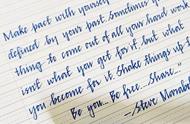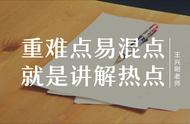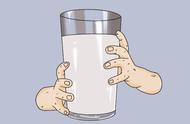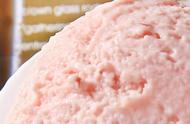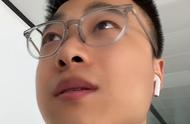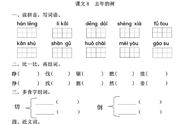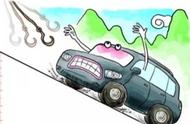关注不迷路!
逢考必有.小学英语重点短语和知识点汇总大全!掌握轻松拿高分!
第一节动词短语
clean the floor 扫地
clean the house 打扫房间
collect stamps 集邮
come back 回来
come from 来自……
come here 来这里
come in 进来
come on 过来/加油
come to tea 来喝茶
cook the meal 煮饭
crash into 撞向
dig a hole 挖坑
do housework 做家务
do morning exercises 晨练
do one’s homework 做作业
do some reading 读点书
do sports 做运动
draw a picture 画画
drink some water 喝些水
drive a car 驾车
fall over 跌倒
fill the hole with earth 用泥土填坑
get off 下车
get out of 走出(……之外)
go and have a look 去看一看
go back 回去
go boating 去划船
go fishing 去钓鱼
go for a walk 去散步
go home 回家
go on a diet 节食
go out 出去
go shopping 去购物
go sightseeing 去观光
go skating 去溜冰
go skiing 去滑雪
go straight on 直走
go swimming 去游泳
go to bed 去睡觉
go to school 去上学
go to the cinema 去看电影
go to work 去上班
have a bath 洗澡
have a Chinese lesson 上语文课
have a cold 感冒
have a fever 发烧
have a good time 玩得开心
have a headache 头痛
have a look 看一看
have a picnic 举行野餐活动工
have a rest 休息
have a stomachache 胃痛
have a tooth-ache 牙痛
have a trip 去旅游
have a try 试一试
have been to 到过
have breakfast 吃早餐
have fun 玩得开心
have lunch 吃午饭
have some coke 喝些可乐
have supper/dinner 吃晚饭
have time 有时间
just a minute 等一下
just now 刚才
keep a diary 记日记
let me see 让我想一想/让我看一看
listen to music 听音乐
listen to the CDs 听 CD 碟
listen to the radio 听收音机
make friends 交朋友
make the bed 整理床铺
mark the pupils’ homework 批改作业
next to 下一个
no problem 没问题
paint a picture 涂画
pick up 捡起
plant trees 种树
play badminton 打羽毛球
play basketball 打篮球
play cards 打牌
play football 踢足球
play games 玩游戏
play table tennis 打乒乓球
play tennis 打网球
play the guitar 弹吉他
play the piano 弹钢琴
put away 放好
put on 穿上
put the tree into the hole 把树放进洞里
ride a bike 骑自行车
see a film 看电影
surf the Net 上网
take a message 传递信息
take exercise 进行锻炼
take medicine 服药
take off 脱下
take photos 照相
turn off 关闭
turn on 打开
wait a moment 稍等一下
wait for 等候
wash clothes 洗衣服
wash dishes 洗碟子
watch a football match 看足球赛
watch TV 看电视
water the flower 浇花
water the tree 浇树
write a letter 写信
第二节 介词短语
a glass of 一杯……
a lot of 许多……
a map of 一幅……的地图
a pair of 一双……
a picture of 一幅……的画
a plate of 一碟……
agree with 同意……
all of them 他们大家
all of us 我们大家
at first 首先
at home 在家
at last 最后
at night 在晚上
at school 在学校
at the top of 在……顶部
at the weeken 在周末
be good at 擅长于……
be made of 由……制造
by the road 在路边
by the way 顺便问问
close to 靠近……
different from 不同于
fall down 跌倒
far away from 远离
from then on 从那时起
from…to… 从……到……
full of 充满
get off 下车
get on 上车
get out of 走出……之外
get to 到达
go on 继续
hand in 上交
help…with… 帮助某人做某事
in English 用英语
in front of 在……前面
in the afternoon 在下午
in the east / south / west /north 在东/南/西/北方
in the evening 在晚上
in the middle 在中间
in the morning 在早上
in the sky 在空中
in time 及时
in trouble 遇到麻烦
It’s time to 是该……的时候了。
late for 迟到
look for 寻找
not at all 根本不
on foot 步行
on holiday 度假
on Monday 在星期一
on September 1st
在九月一日
on the farm 在农场
on the left 在左边
on the right 在右边
on time 准时
play with 与……玩
put on 穿上
sit down 坐下
stand up 起立
start for 出发前往
talk to 和……交谈
Thank you for… 感谢你的……
wait for 等待
wake up 醒来
第三节 特殊疑问词
what 什么
where 哪里
who 谁
whose 谁的
when 什么时候
how 怎样
which 哪一个
what time 什么时候
what colour 什么颜色
what language 什么语言
what subject 什么科目
what class 什么班
what day 星期几
what date 日期
how many 多少
how much 多少钱
how often 多经常
how long 多长时间
how old 多大
how tall 多高
how heavy 多重
why 为什么
第四节 缩写词
I’m = I am
It’s = it is
he’s = he is
she’s = she is
you’re = you are
they’re = they are
that’s = that is
isn’t = is not
aren’t = are not
don’t = do not
doesn’t = does not
wasn’t = was not
weren’t = were not
hasn’t = has not
haven’t = have not
can’t = cannot
won’t = will not
we’ll = we will
who’s = who is
what’s = what is
let’s = let us
here’s = here is
No. = number
第五节 时间词和短语
year 年
month 月
week 周
date 日期
day 日
hour 小时
morning 早上
afternoon 下午
evening 晚上
the day before yesterday 前天
yesterday 昨天
today 今天
tomorrow 明天
the day after tomorrow 后天
last year 去年
last month 上个月
last week 上个星期
next year 明年
next month 下个月
next week 下周
第六节 常见介词
(一)方位介词
in 在……里面
at 在……(小地方)
on 在……上面
under 在……下面
behind 在……后面 next to 紧挨着
near 在……附近
in front of 在……前面
over 在……上方
outside 在……外面
between…and… 在……与……之间
in the middle 在中间 beside / by 在……旁边
(二)其他介词
at… 在……点钟
for 给,为了,作为
to 到……
from…to… 从……到……
of ……的
by 乘(坐)……交通工具
with 用……,和……一起,带……
into 进去
from 来自
out 外面
up 向上
down 向下
before 在……之前
after 在…
第七节 时间介词 at,on,in 的用法
1、at 用在具体的时刻和中午前面。如:at 6:00, at seven thirty, at noon
2、on 用在具体星期、日期前面。如:on Monday, on September 1st
3、in 用在年、月、季节或早上、下午、晚上的前面。如:
in 2008, in February, in spring, in the morning
时间的排列顺序:由小到大如:
at two in the afternoon 在下午 2 点。
on September 1st ,2006 2006 年 9 月 1 日。\
How many 和 How much 的区别和用法
大家都知道 how many 和 how much 是用来ᨀ问多少,的意思,那么 how many 和 how much 有什么区
别吗?
1、所修饰词的不同
how many 用来修饰可数名词的复数,它的句式是:How many 复数名词 一般疑问句+
how much 用来修饰不可数名词,表示数量,也可单独使用。
2、how many 的用法
(1)对 there be 句型中主语的数量如:some, five, only one 等ᨀ问时,如果主语是可数名词,
不管主语是单数还是复数一般都用复数形式ᨀ问,因为问话人不知道具体的数量是多少,而且 many只能
接可数名词复数形式,所以 be 一定要用 are.即用 How many 可数名词复数 are there 地点/时间状
语 的句型结构.例如:
a.There is a book on the desk. (用 how many 改为特殊疑问句)
How many books are there on the desk
b.There are seven days in a week. (对划线部分进行ᨀ问)
How many days are there in a week
(2)记忆口诀
how many 在句首,名词复数跟着走,一般问句紧相随,其它成分不要丢.
3、how much 的用法
(1)用来询问事物的数量,后接不可数名词。例如:
How much milk is there in the glass 玻璃杯里有多少牛奶?
(2)用来询问事物的重量。例如:
----How much does the pig weigh 这头猪多重?
----Eighty kilos.八十公斤。
(3)how much 意为“多少钱”时,可单独使用,也可构成词组 how much money,但英语中常省
略 money,用来询问某物的价钱、价格。
(注意:how much 询问价格时,它的回答若是中国的货币单位应采用汉语拼音 yuan,fen 来表示,
几角常采用几十分来表示,字母用小写,且不用复数。例如:
-How much is the eraser 这块橡皮擦多少钱?-Ninety two fen.九角二分。)
(4)用来询问数字计算的结果,相当于 what。例如:
-How much is three plus one 三加一等于多少? -It ’s four.等于四。
第七节
have 和 has 的用法
have 和 has 与主语搭配:
have:I 、We、You 、They、Amy and Tom
has: He 、She 、It 、The boy、Amy
可见,主语为第三人称单数时用 has,其余人称都用 have。
have / has 的含义及用法:
1、作“有”讲。如: I have a bag. 我有一个包。 He has a red cup. 他有一个红杯子。
2、作“吃、喝”讲。如:
have breakfast (吃早饭) have tea (喝茶) have a drink (喝点水)
3、作“拿、取得、得到”讲。如:Can I have a toy? (我可以要一个玩具吗?)
注:somgthing,everything 等用 has,each of 加名词用 has,复数主语开头加 each 如 they each 仍旧用 have.
第八节 do 和 does 的用法
do 这个词(does 是第三人称单数形式),大体上从两方面来讲。关注小学生试题加油站公众号(ID:xxsjyz2019),获取更多小学试题资料
关
关注小学生试题加油站公众号(ID:xxsjyz2019),获取更多小学试题资料
1.作为行为动词,跟其他动词一样,如 study, play 等。他的意思是“做”等。如:
We usually do our homework in the afternoon.
He does his homework in the evening.
2.作为助动词,也就是帮助主要动词构成否定和疑问等。
We don't like bananas. Do you like apples?
Does he like English? He doesn't like swimming.
上面有一句 He does his homework in the evening.变成否定句是:
He doesn't do his homework in the evening.
这里加上了助动词 doesn't,而原来的主动词 does 变成原形 do 了。
作为助动词的 do 和 does 是没有词义的,它们在句中的构成一般现在时的疑问句和否定句.
Do 用于主语第一人称,第二人称和第三人称复数形式的句中,does 用于主语第三人称单数的句中。
Do you want to be a teacher? 你想成为一个老师吗?
I don’t like him. 我不喜欢他。
Where does Tom come from? 汤姆来自哪里?
I don’t know.我不知道。
He doesn’t live here. 他不住在这儿。
will/can/could/would/should/shall 等助动词后面加 be
其他时候, 第一人称 I 后面用 am,第二人称, 复数, 用 are 单数用 is...
情态动词的用法
一、情态动词的定义:情态动词有词义,但它不能单独作谓语,它必须和其他动词一起构成谓语。情
态动词没有人称和数的变化;它的后面必须跟动词原形。
二、情态动词的种类:

三、情态动词的用法及主要句型:
1、Can I help you? ——Yes, please. / No, thanks.
2、Can 主语 动词原形? Yes, ~ can. No, ~ can’t.
3、Can I borrow your book?----Yes,of course.
4、Can I write on the book? ------No, you can’t\mustn’t.
5、Could \Can you help me?---- Yes,of course.\Certainly.\ Sure.
6、Could \Can you tell me the way to the Zoo?
7、May I come in ?----- Come in, please
8、May I sit here?----- Yes, please.\Sorry, please don’t.
9、May I have some Coke?---- Yes, of course.
10、May/ Could / Can I speak to Tom? -----Speaking. Who’s calling?
11、should 、shouldn’t 表示劝告:
1) He should get up early. 2) She shouldn’t play computer game too much.
12、Should 主语 动词原形? Yes, ~ should.\ No, ~ shouldn’t.
13、表示建议“你愿意…吗”
Would you like to go shopping with me? -----Yes, I’d love to. /I’d love to. But I’m busy now.
14、就餐用语 Would you like something to eat\drink? ----Yes, I’d like…
15、shall 用于第一人称(I, we), 可以表示“将”和表示建议 “……好吗?”
1) Where shall we have dinner? 2) Shall we go fishing? -----All right. \OK. \Good idea.
16、Must 主语 动词原形? ---Yes,~ must.\No, ~ needn’t.
(二)不规则动词的过去式(后附不规则动词变化表)
1、改变动词中的元音;
begin→began drink→drank come→came eat→ate grow→grew run→ran know→knew
win→won speak→spoke take→took write→wrote get→got
2、变词尾的–d 为–t ; build→built lend→lent send→sent spend→spent bend→bent
3、与动词原形一样; cut→cut put→put cost→cost hurt→hurt shut→shut
4、变-ay 为-aid (少数动词); say→said pay→paid lay→laid
5、采用不同词根;sell→sold teach→taught buy→bought
6、其他。如:am/is→was are→were have/has→had do→did
小学英语不规则动词变化表
1. am/is –was 动词“是”
2. are—were 动词“是”
3. become—became 变为,变成
4. begin—began 开始
5. buy—bought 买
6. bring—brought 拿来,带来
7. beat—beat 敲打,搅拌
8. blow—blew 吹,吹动
9.
break—broke 打破,打碎,折断
10. build—built 建筑,建造
11. can—could 能,会,允许,可以
12. come—came 到,到来,来临
13. catch—caught 捕捉,抓住
14. cut—cut 切,割
15. cost—cost 花费
16. choose—chose 选择
17. do/does—did 干,做
18. drink—drank 喝
19. drive—drove 驾驶,驾驭,驱赶
20. draw—drew 画
21. dig—dug 挖,掘,刨
22. eat—ate 吃
23. fly—flew/flied 放(风筝)
24. forget—forgot 忘记,遗忘
25. fall—fell
落下,掉下,跌倒
26. feel—felt
触摸,感觉,觉得
27. find—found 寻找,发现,找到
28. give—gave 给,给予
29. go—went 去,离去,离开
30. get—got
开始,收到
31. grow—grew 生长,成长
32. have/has—had 拥有,取得,拿
33. hurt—hurt 使受伤,使痛疼
34. hit—hit 打,撞击,碰撞
35. hang—hung 悬挂,吊
36. hear—heard 听,听见,收到
37. hold—held 抓住,握住,拿住
38. know—knew 知道,了解
39. lose—lost 丢失,遗失
40. lend—lent 借给,贷给
41. learn—learnt/learned 学习,得知
42. let—let 放开,允许
43. leave—left 离开,离别,离去
44. lie—lay 躺,卧
45. make—made 制作,制造,整理
46. meet—met 遇见,看见,引见
47. may—might 可以,允许
48. mean—menat 意思是,决定做
49. put—put
放,安置
50. ride—rode 乘,骑,坐
51. rise—rose 升起,出现
52. read—read 阅读,朗读
53. run—ran 跑,奔跑
54. ring—rang 给…打电话,画图
55. shall—should 命令,允许
56. swim—swam
游泳,游
57. sing—sang 唱,唱歌
58. sit—sat 坐,就坐
59. send—sent
送,寄,递
60. spend—spent 花费(钱,时间)
61. sweep—swept 打扫,清理
62. smell—smelt 闻,嗅
63. sleep—slept 睡觉,睡
64. speak—spoke 说,说话,讲话
65. sell—sold 卖,出售
66. see—saw 看,看见,望
67. say—said 说,说话
68. stand—stood 站立,站起
69. steal—stole 偷,盗取
70. think—thought 思考,考虑
71. teach—taught 教,教导,教授
72. take—took 得到,拿走,抓住
73. throw—threw 扔,投,掷
74. write—wrote 写,书写,写字
75. win—won 获胜,赢得
76. wake—woke 醒,使活跃
77. will—would 将要,可以,会
78. wear—wore 穿着,佩戴
四、人称代词的变化形式
第九章 方位的表达方式
第一节 交通工具及 “规则”
一、介词规则
(一)by 条款:骑车、乘(驾)车、乘船、乘飞机可以使用介词 by。
1、by 后跟"光棍"名词,即名词不加任何修饰。如:by bike/bus/car/train/ship/boat/plane。
如:She is going to the Great Wall (长城) by car/ bus.
2、by ship 可用 by sea 表示;by plane 可以用 by air 表示。如:
a. How long does it take by ship/sea? b. They often come back by plane/air.
(二)in/on 条款:步行、骑车、乘车、乘船、乘飞机可以使用介词 in/on。
1.步行只可用 on foot。(注意:步行不用 by foot) 如:Sometimes I go to school on foot.
2. 骑自行车须用介词 on :on a/ one's bike。
3. 乘车、乘船、乘飞机可用 in 也可用 on: in/ on a bus/train/ship/boat/plane。
4. 乘坐小汽车应使用 in a car,不用 on a car。
条款说明(一)
1. "by 名词"短语,多可以用 in/on 短语替换来表示"骑、乘"之意。如:
a. His father goes to work by bike. →His father goes to work on a bike.
b. They go to the railway station (火车站) by car. →They go to the railway station in a car.
2. by sea,by air 是一种比较随便的口语结构,故不宜用 in 短语和 on 短语进行改写。即:
by sea 不可用 in/on the sea 替换;by air 不可用 in/on the air 替换。
二、动词规则
以上出行活动皆可以选择性地用动词 walk, ride, take, drive 来表示。
1. 步行用 walk (to)。如:She walks home every day.关注小学生试题加油站公众号(ID:xxsjyz2019),获取更多小学试题资料
关
关注小学生试题加油站公众号(ID:xxsjyz2019),获取更多小学试题资料
2. 骑车用 ride a bike。如:Can you ride a bike to go there?
3. 乘车用 take a bus/train。如:I will take a bus/train to go to Beijing.
4. 乘飞机用 fly (to ) 或 take a plane。如:We are flying to England next week.
5. 乘(驾)小汽车用 drive a car。如:They will drive a car to go to the USA.
条款说明(二)
动词规则不能与介词规则相结合使用,尤其是动词 walk, fly 。如:
She walks home on foot every day. (×)
a. She goes home on foot every day. (√)
b. She walks home every day. (√)
He will soon fly to London by plane/air. (×)
a. He will soon fly to London. (√)
b. He will soon go to London by plane/air. (√)
第二节 英语中方位的表达方式
一、in, to, on 和 off 在方位名词前的区别
1. in 表示 A 地在 B 地范围之内。如:Taiwan is in the southeast of China.
2. to 表示 A 地在 B 地范围之外,即二者之间有距离间隔。如:Japan lies to the east of China.
3. on 表示 A 地与 B 地接壤、毗邻。如:North Korea is on the east of China.
4. off 表示“离……一些距离或离……不远的海上”。如:New Zealand lies off the eastern coast
of Australia.
二、 汉语里“东南西北”的先后顺序到英语里就变成了 north,south,east,west;并由此有了下
列中、英文表达上的差异。
东南方:southeast 西南方:southwest 西北方:northwest 东北方:northeast
如:十三陵位于北京西北 50 公里处。The Ming Tombs are located about 50 km to the northwest
of Beijing.
天津位于北京东南
120 公里处。Tiajin is situated l20 km southeast of Beijing.
三、 near, by, beside, at 表示“在……附近”时的区别
1. near 表示相对的近,实际距离可能还很远。如: Suzhou is near Shanghai.
2. by 和 beside 都表示靠近,实际距离不可能很远,但 beside 比 by 更具体地表示出“在……旁边”
的意思。如:He was sitting beside her.
3. at 也有“在旁边”的意思,但多表示有目的的行为所处的位置,而 by 和 beside 仅表示位置关系。
如:The students are sitting at the desks listening to the teacher.
四、at, in 和 on 表示地点时的区别
1、at 表示地点:
(1)用于指较小的地方。如: I shall wait for you at the station.
(2)用于门牌号码前。如: He lives at 115 Zhongshan Road.
2、in 表示地点:
(1)用于指较大的地方。如: He lives in Shanghai.
(2)虽然是很小的地方,如果说话人住在那里,也可用 in。商店、学校、机关等,若看作一个地点
(point)用 at,若看作一个场所(place)用 in。如:
I met him at the post-office. I’m now working in the post-office.
3、on 表示地点,一般指与面或线接触,意为“在……上;在……旁”。如:
The picture was hanging on the wall. New York is on the Hudson River.
五、above, over, on, up 表示“在……上”之间的区别
1、 above 指“……上方”,表示相对高度,不一定在正上方,其反义词为 below。如:We’re flying
above the clouds.
2、over 指“在……正上方”,表示垂直上方,其反义词为 under。 如: The bridge is over the
river.
3、on 表示“在……上面”,与物体表面接触,与 beneath 相对。
如:There is a map on the wall. The earth felt soft beneath our feet.
4、up 表示动作的方向往上,反义词为 down。 如: Please hang the picture up.
第十章 句型转换方法归纳
第一节 改为一般疑问句
1、先找 be 动词 am, is, are, was, were 或情态动词 can, may ,must, would,should ,could .如果有这些词,
直接把这些词放在句子最前面, some 改成 any,句号改成问号!其余照抄;(如果主语是第一人称则变成
第二人称)
2、如果句子中没有 be 动词或者是情态动词,要在句子最前面加助动词 do 、does 或者是 did。
首先判断句子时态,如果句子是过去式,则要在句最前面加 Did,后面动词用原型,some 改成 any,
句号改成问号,其余照抄;(如果主语是第一人称则变成第二人称)
如果句子不是过去式,则判断是否为第三人称单数,如果第三人称单数,要在句子最前面前加助动词
Does,后面动词用原型,some 改成 any,句号改成问号,其余部分照抄。(如果主语是第一人称则变成第二
人称)
其他情况均要在句子最前面加助动词 do,some 改成 any,句号改成问号,其它部分照抄. (如果主语
是第一人称则变成第二人称)
第二节 改为否定句
1、先找 be 动词 am, is, are, was, were 或情态动词 can, may ,must, would,should ,could .如果有这些词,
直接在这些词的后面加 not, some 改成 any,其余照抄;
2、如果句子中没有 be 动词或者是情态动词,要在动词前面加 don’t 、doesn’t 或者是 didn’t。
首先判断句子时态,如果句子是过去式,则要在动词前面加 didn’t,后面动词用原型,some 改成 any,
其余照抄;
如果句子不是过去式,则判断是否为第三人称单数,如果第三人称单数,要在动词前面前加 doesn’t,
后面动词用原型,some 改成 any,其余部分照抄。
其他情况均要在句子动词前面加 don’t,some 改成 any,其它部分照抄.
第三节 对划线部分ᨀ问
第一步:先把句子改成一般问句
第二步:把ᨀ问部分省略,在句子最前面加疑问词。(如果ᨀ问部分是动词词组,要把它改成 do;如
果ᨀ问部分是动名词词组,要把它改成 doing)关注小学生试题加油站公众号(ID:xxsjyz2019),获取更多小学试题资料
关
关注小学生试题加油站公众号(ID:xxsjyz2019),获取更多小学试题资料
(注:如划线部分为主语,则用 who 代替,其余照抄;如划线部分为动词或动词短语,则用 do 代替,
句前加 what,再改为一般疑问句。
第四节 肯定句、否定句、一般疑问句与特殊疑问句
1、肯定句:是指用肯定的语气来陈述的句子,如:
I’m a student. She is a doctor. He works in a hospital. There are four fans in our classroom..
2、否定句:含有否定词或表示否定意义词的句子,如:
I’m not a student. She is not (isn’t) a doctor. He does not (doesn’t) work in a hospital. There are
not (aren’t) four fans in our classroom.
☆注意小结:否定句主要是在肯定句的基础上加上了否定词 “not”。有动词 be 的句子则“not”加在 be
后面,可缩写成“isn’t,aren’t”,但 am not 一般都分开写。没有动词 be 的句子则要先在主要动词的前面加
上一个助动词(do,does,did),然后在它后面加上“not”,你也可以把它们缩写在一起如“don’t , doesn’t ,
didn’t )。这三个助动词要根据人称和时态来选择,其中“does”只用于一般现在时主语是第三人称单数的情
况,而“did”只用于一般过去时,不论主语是什么人称和数,都用“did” 。
3、一般疑问句:是指询问事实的句子,此类句子必须用“yes”,或“no”来回答。如:
Are you a student? Yes, I am / No, I’m not.
Is she a doctor? Yes, she is. / No, she isn’t.
Does he work in a hospital? Yes, he does. / No, he doesn’t.
Are there four fans in our classroom? Yes, there are. / No, there aren’t.
☆注意小结:一般疑问句是在肯定句的基础上:①把动词 be 调到首位,其他照写,末尾标点符号变
成问号即可。②没有动词 be 的句子则要在句首加上一个助动词(do,does,did)再把紧跟在后面的动词
变回原形,末尾标点符号变成问号即可。
这三个助动词也要根据人称和时态来选择,其中“does”只用于一般现在时主语是第三人称单数的情况,
而“did”只用于一般过去时,不论主语是什么人称和数,都用“did” 。一般疑问句有个重要的原则就是问和
答要一致,即问句里的第一个单词(助动词)和简略答句里的这个词是一致的。
4、特殊疑问句:以特殊疑问词(what , where , who , which , when , whose , why , how 等)开头引导的
句子。此类句子应该问什么就答什么,不能用“yes 、no”来回答。如:
What is this? It’s a computer. Where are you going? I’m going to Beijing.
What does he do? He’s a doctor. Which season do you like best? Summer.
Who played football with you yesterday afternoon? Mike.
When do you usually get up? I usually get up at 6:30.
Why do you like spring best? Because I can plant trees.
How did you go to Xinjiang? I went to Xinjiang by train.
☆其中 how 又可以和其他一些形容词连用组成特殊疑问词组用来ᨀ问,如:
how many(多少(数量)) how much(多少(钱)) how tall(多高)
how long(多长) how big(多大)
how heavy(多重)
例句:How many pencils do you have? I have three pencils.
How many girls can you see? I can see four girls.
How many desks are there in your classroom? There are 51.关注小学生试题加油站公众号(ID:xxsjyz2019),获取更多小学试题资料
关
关注小学生试题加油站公众号(ID:xxsjyz2019),获取更多小学试题资料
☆小结:how many 用来ᨀ问可数名词的数量,主要有以上三种句式搭配,
How many 名词复数 do you have?
你有多少……?
How many 名词复数 can you see?
你能看见多少……?
How many 名词复数 are there…?
有多少……?

